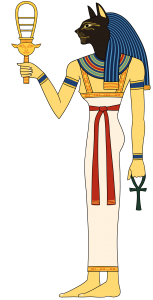Cats and dogs are about as different as… well… cats and dogs. But one thing they have in common, at least from a scientific perspective, is that researchers don’t know exactly where or when either one arose. Scholars had long assumed that Ancient Egypt birthed the domestic cat, thanks to the plethora of felines in the art and religion of the famed civilization. But over the last couple of decades, the focus has shifted hundreds of kilometers north—and thousands of years earlier in time.
Archaeological finds—including the discovery of a human apparently buried with a feline under a 9500-year-old home on the Mediterranean island of Cyprus—have created a narrative that goes something like this: Early farmers in what is perhaps today’s Turkey grew crops, which attracted rodents, which attracted wildcats. As these cats slunk into human villages, the tamest would have been tolerated (and perhaps cared for) by people, evolving over the generations into the housecats we know today. It’s a nice story, and one I’ve told myself in both my book and in various articles.
But two new studies find no evidence that cats arose this early, or in this part of the Mediterranean. Those earlier “cats” were not domestic cats at all, the teams find, but rather European wildcats, a bulkier species not closely related to either domestic cats or their direct ancestor, the African wildcat. Absent these felines, Ancient Egypt returns to the limelight. But when? And how?
That remains an open question. Though one of the studies argues for a gruesome tale that goes something like this: The popularity of a cult worshipping the Egyptian goddess Bastet in the first millennium BCE lead to a huge demand for cat mummies, which required a huge amount of cat sacrifices, which required a huge amount of cats, which required that cats literally be herded in massive numbers into small areas. Those cats most suited to live around other cats—and humans—would have become tamer over the generations, eventually evolving into the furballs we know today. The authors call it the “murder pathway of domestication.”
It’s very likely that this isn’t the final word on the matter. For one, there is evidence of domestic cats in Egypt hundreds of years before this cat cult arose. For another, there’s no evidence of this domestication pathway, just speculation. So for now, cats and dogs continue to share origins that remain deeply shrouded in mystery.


